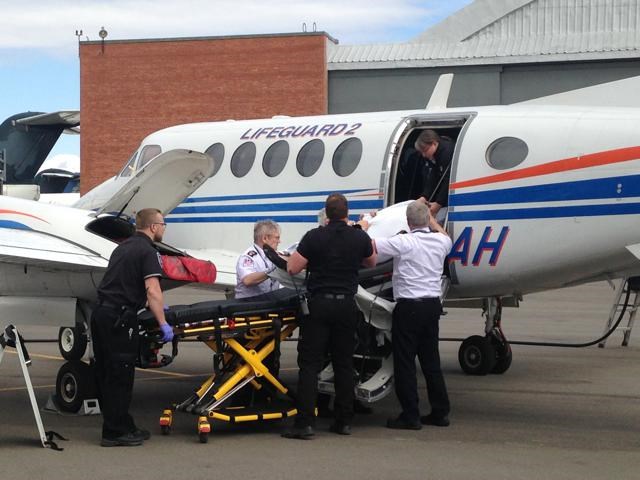Saskatchewan is served by two critical care air medical agencies that provide patients rapid transport and care from one point to another – Saskatchewan Air Ambulance (SAA), who use airplanes to transport patients, and STARS (Shock Trauma Air Rescue Service), who use helicopters.
Saskatchewan’s emergency medical services (EMS) include volunteer medical first responders, ground ambulance and basic to intermediate northern air medivac service as well as the Saskatchewan Air Ambulance airplane and STARS helicopter medivac services. Together, they ensure service to critically ill or injured patients across the province and are particularly important to citizens living in rural and remote communities.
SAA is North America’s oldest formally-organized non-military air ambulance service. Launched as a lifeline in a rural province that boasted few major highways at the time of the Second World War, SAA celebrated its 70th anniversary in 2016 and has continually provided an exceptional level of service to the residents of Saskatchewan.
This critical care service continues to fulfil a vital role for the province, transporting approximately 1,400 critically ill and injured patients each year to definitive care, both within Saskatchewan as well as to and from other provinces across the country.
SAA operates out of a base at the Saskatoon airport, dispatching critical care crews 24 hours a day to locations across the province to perform critical care inter-facility transports and to transport patients to and from other provinces for care not available in Saskatchewan. SAA planes and crews operate in most weather conditions and can be dispatched for an emergency within 30 minutes of receiving a request. Flights are staffed by highly-trained air medical crews that provide care along the way. Those crews include pilots, critical care flight nurses, critical care paramedics, and physician oversight from a transport physician available to provide support or fly with the team when necessary.
STARS is a non-profit organization that provides air medical transportation and in-flight care for critically ill and injured patients by helicopter 24-hours-a-day, transporting over 700 patients per year. In April 2011, the province signed a 10-year service agreement with STARS to implement helicopter air medical services in the province starting in 2012.
STARS has bases in Saskatoon and Regina, and in addition to pilots, STARS air medical teams consist of critical care paramedics, critical care nurses and transport physicians who oversee the transport of patients and fly with the team when necessary.
The STARS helicopter has a range of approximately 500 kilometres, meaning it can reach a scene or hospital within 250 kilometers of one of its bases and return without refueling. If STARS is required for a flight that is further than its flight range, the STARS helicopter will touch down and refuel at fuel service sites established at municipal airports and by private owners.
Selecting the most appropriate emergency medical transportation for critically ill or injured patients — whether to use ground ambulance or air ambulance (STARS or SAA) — is a call made on a case-by-case basis. For most emergency calls, the medical first responders and nearest ground ambulance service will be dispatched regardless. If air medical transport is deemed necessary, the most appropriate air medical service will also be dispatched.
A variety of factors are considered in the decision-making process, including level of care required, availability of resources, travel distance, weather conditions, location of landing sites or runways, condition of the patient, and whether a specialty team is required to care for the patient. In general terms, SAA is used if longer distances are travelled, as airplanes can travel farther and faster without stopping to refuel. This makes missions to the far north one of SAA’s specialties. SAA airplanes travel at a cruising speed of over 500 km/hr and can travel over 1,000 miles without requiring a fuel stop. The requirement of properly maintained runways is extremely important to ensure SAA is able to provide service to various communities when required.
While roughly 60 per cent of STARS missions are critical care transports between hospitals, the helicopter medical service is highly suited for emergency calls where access may be limited. STARS crews are able to land on highways, in parking lots, fields, and other areas free of obstructions such as trees or power poles. They generally just need an area of 36 meters by 36 meters of clear, relatively flat space.
This maneuverability means they can respond in a timely manner to emergencies like motor vehicle collisions and industrial site accidents and can load patients directly from the scene. STARS can also be a useful resource in search and rescue missions.
STARS and SAA, along with ground ambulance, are all links in the chain of survival for those requiring immediate and critical care in Saskatchewan, working together with the larger health system to provide quality care and access to all citizens of the province.




